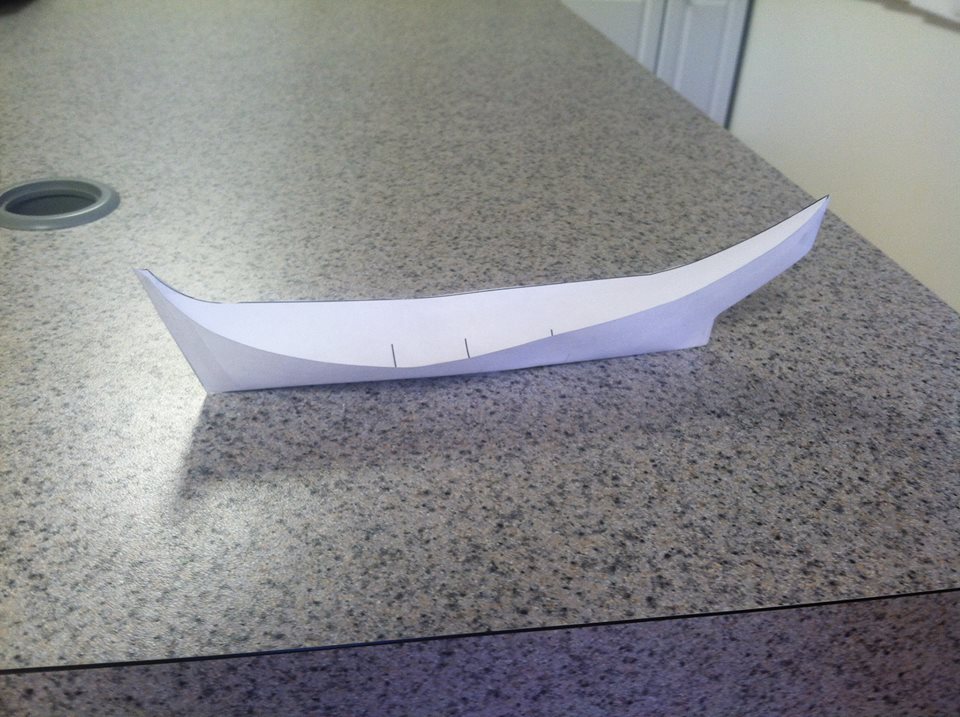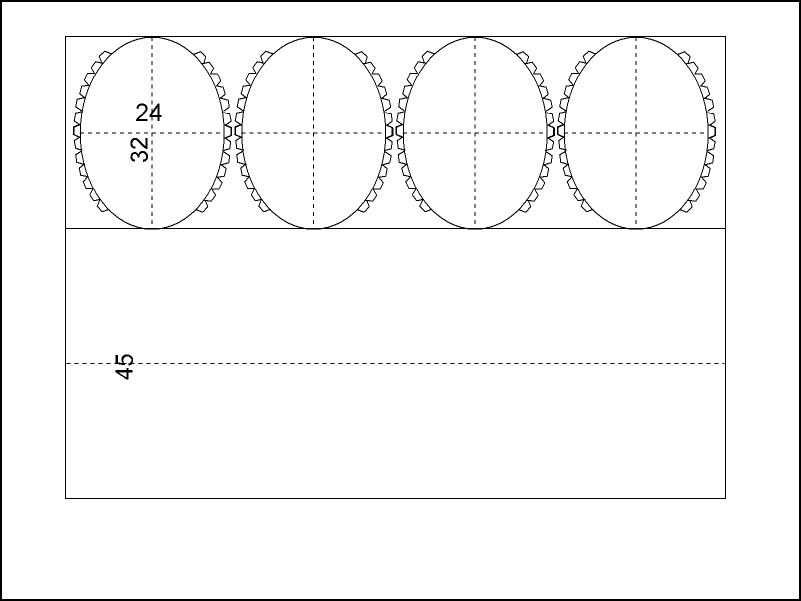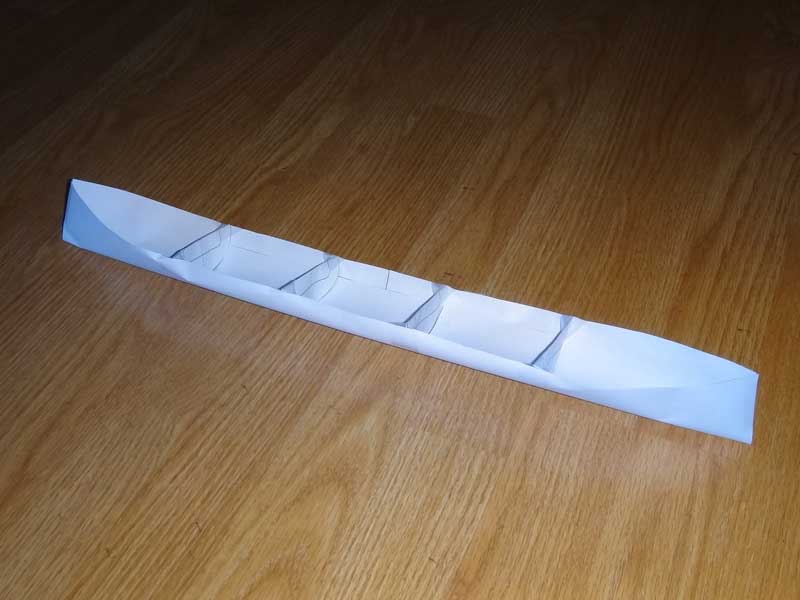
|
Cardboard Boat for the 2013 Toledo Boat Show Toledo is home to a Georgia Pacific pulp mill, and one of the products is container board - what we normally call cardboard, the stuff with two smooth sides and a ruffle in between. It comes in sheets 77x110 and is 1/4" thick, we get two sheets and usually two 5" dia, 8'-ish long tubes. Here's the rules for the build (last year's rules, anyhow.) Last year, we made boats based on the Cardboard Boat Book and they were great and all, but it's time for something else. Pictures of the boat show and the race Originally, I was thinking of just gtting some silly Make a Paper Canoe pattern, like this one from the Kid's program at the Denver Museum of Art
I even made a model of it
Sadly, it's too . . . frilly for me. I cogitated a bit moer, then ermembered the movie "Ten Canoes" where some Australian aboriginals made caneos out of tree bark - they literally just pinched the ends together. Inspiration came shortly there after. Design Constraints: Must hold more than one person, assembled with contact cement, and painted for waterproofing. It should be sturdy enough to make it to the end of the course and back, but since I won't be in it, that's not manditory.
First sheet is easy: the 45" wide piece will make 1/2 of the hull. The 32" wide piece will be the cockpit. It will make the bottom double thick and also limit where people can be in the boat (saves us work.)
In the second sheet, we get the 2nd half of the hull and four ovals that will make up the inner structure of the canoe. The hull will have a beam of 34", making paddling easy.
Step 1 is to make the cockpit. The bulkheads will be slightly over 36" apart, plenty of room for a kneeling paddler (not built for ccomfort.) The bulkheads won't be exactly flat - they'll be slightly V shaped to increase rigidity. The little fringe thingies are just for glue area.
Next is to attach the hull pieces. You may notice I'm erlying on the cardboard to curve uniformly. My plan is to roll it first. The ends are simply pinched together. It'll still be rigid fore and aft. Seams will be taped with drywall tape (paper, not fiberglass.) Paint is just regular exterior house paint.
Here's the model. Final verson will be 18' 4" long and 34" wide. It's symetrical and teh cockpit spaces are evenly spaced, so it won't turn worth a poop, but it should be sleek and fast - two paddlers ought to make it go as fast as it can possibly go. |







